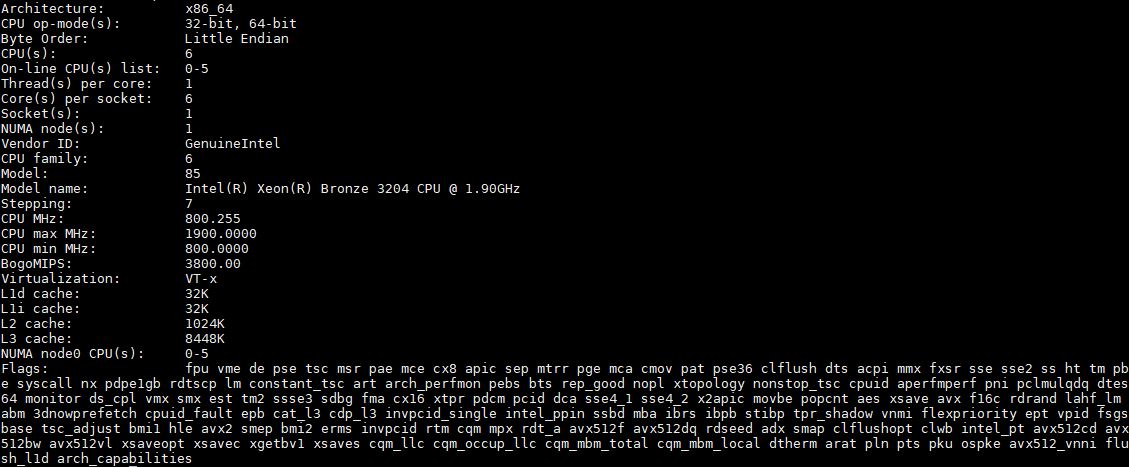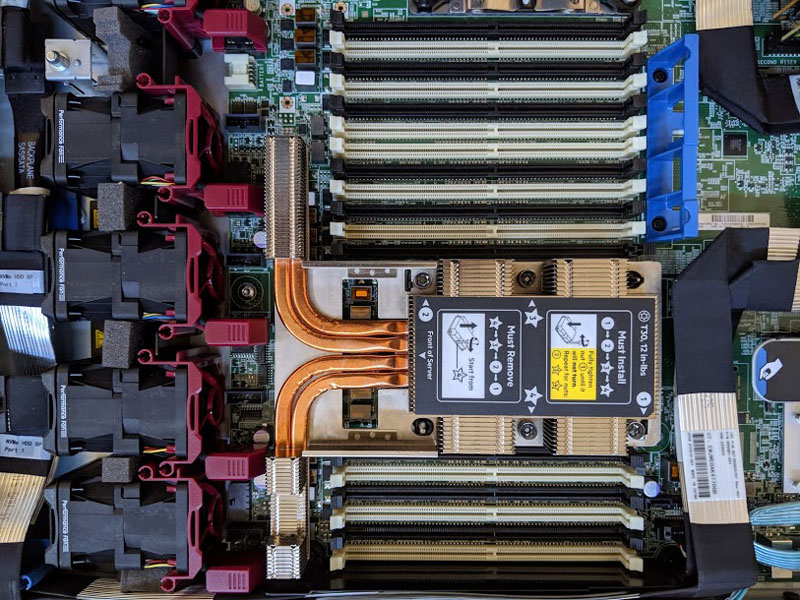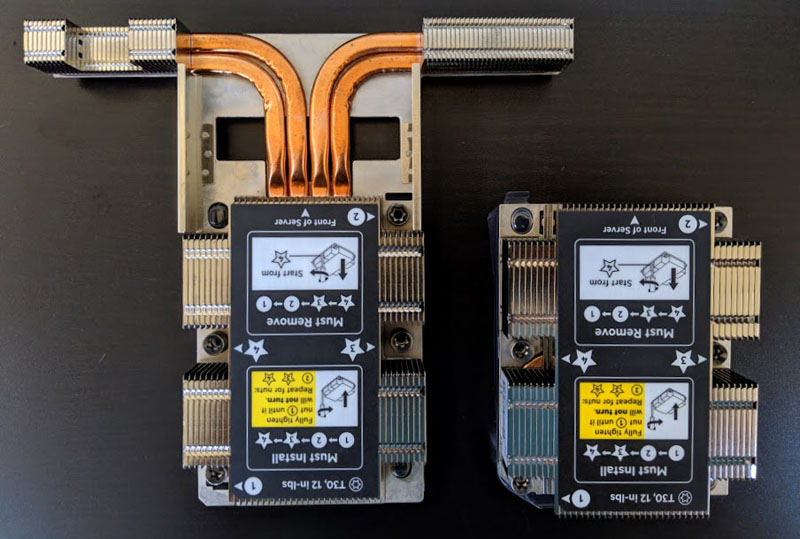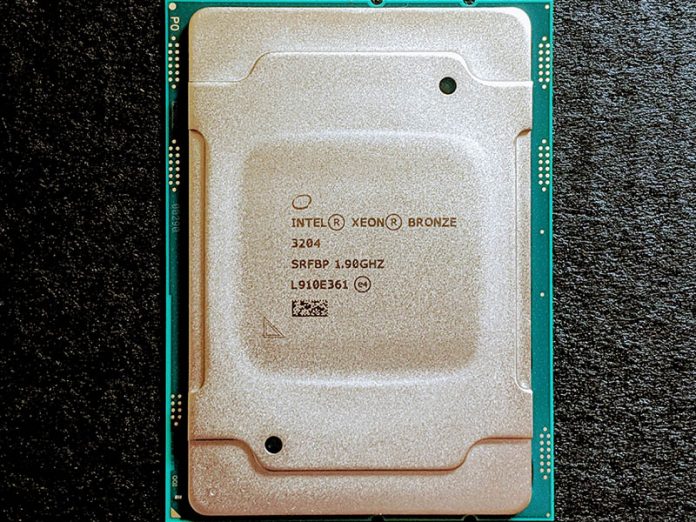If you want the lowest cost LGA 3647 2nd Generation Intel Xeon Scalable processor, there is only one option. The Intel Xeon Bronze 3204 is the only “Bronze” level SKU in this generation. When the new naming convention debuted in the last generation, we published a three-generation comparison of the lowest-end parts in Intel Xeon Bronze 3104 v E5-2603 V3 and V4 Three Generations Compared. Generally, these parts are used to simply light the platform to take advantage of the I/O capabilities for storage appliances and similar low-compute use cases. They are also used by major OEMs to sell complete servers while allowing Channel Cobblers to customize further. At the time of this writing, there is no direct AMD EPYC competition in the sub $250 segment. In our review, we are going to look at how this segment progressed in this generation, as well as over the past five years spanning four generations.
Key stats for the Intel Xeon Bronze 3204: 6 cores / 6 threads with a 1.9GHz base clock and no turbo boost. There is 8.25MB of onboard cache. The CPU features an 85W TDP. These are $213 list price parts. Here is the ARK page with the feature set.
Here is what the lscpu output looks like for an Intel Xeon Bronze 3204:

One item that we should note here is that we (thus far) have two test chips. The Intel Xeon Bronze 3204 is the least expensive chip in the Intel stable so we tend to use a few of these for basic power-on testing while higher-value chips are directed to more useful work.
Testing the two Intel Xeon Bronze chips we saw a decent delta in our power numbers in a number of systems. Our sense is that Intel does a lot of die binning here and so the 85W TDP number is extremely conservative to allow a range of dies to be used and sold as Bronze 3204 parts.
Maximum memory speed here is DDR4-2133MHz versus up to DDR4-2933 in this generation of processors. Combined with the lack of Turbo Boost and Hyper-Threading, this is not a part designed for performance even though it has higher-end instructions like AVX-512 and VNNI. More on that later in this review.l
Intel Xeon Bronze 3204 Test Configuration
For our 2nd Generation Intel Xeon Scalable CPU single socket reviews, we are using the following configuration:
- System: HPE ProLiant DL360 Gen10
- CPU: Intel Xeon Bronze 3204
- RAM: 6x 32GB DDR4-2133 ECC RDIMMs
- Storage: 1x Intel DC S3700 400GB
- PCIe Networking: Mellanox ConnectX-3 HPE FlexLOM dual-port 40GbE
We covered the test system in more detail in our article A New STH 1P 2nd Gen Intel Xeon Scalable Test Platform including the process we went through to select the heatsinks and fans.

One will notice that we are using the high-performance heatsink here with the high-performance fans. That is to ensure that even though we are using a 1U server, we have enough cooling capacity for our testing. If you purchase a new ProLiant DL360 Gen10 you will likely get a standard heatsink which is more than ample to cool a low-power part like this. You can see the difference between the high-performance and standard HPE ProLiant DL360 Gen10 heatsinks here:

Next, we are going to take a look at our Intel Xeon Bronze 3204 benchmarks. We are then going to conclude with our market comparison and final words on the processors.





I bought a pair of 3104 for less than $500 and put on an new exotic Supermicro board. This was our first dual CPU attempt. We figured if happy we replace with a pair of Silvers for $1500 to $2500 the pair. Well the performance from the 3104 pair is so good we have not done that. That is besides the ability to use everything instead of restrictions on one CPU boards. I figure the same for a 3204 pair. I agree a single 3204 is useless.
We are now looking to put in another Supermicro dual CPU board but want to take advantage of the 2900 memory available but it seems to be only available on Gold class. What does Serve the home say about that?
That AVX-512 // GROMACS is fascinating. Sure looks more than 200MHz.
These are also good if you want a physical directory server and stuff like that if you’re got an org that doesn’t want to virtualize
Nice reviews, thanks for that!
Just one point: Instead of using GROMACS to judge AVX performance, why don’t you use Intels Linpack benchmark for that? Although I know GROMACS makes heavy use of AVX instructions, you just cannot say if there are two or just one FMA unit available. (Also with linpack you should not make any claims about it but as it is the one (and only) benchmark that can saturate the FMA units…but do not forget to measure ‘real’ frequencies at the same time e.g. with turbostat on llnux. ) Probably the most interesting benchmark would be to use Agner Fog’s tools:
https://www.agner.org/optimize/
He has the skills to really measure instruction throughput and stuff like that.
Personally I think a Linpack/DGEMM benchmark would be better than just using GROMACS to measure AVX performance.
And now intel tells us to turn HT off because of security issues (which makes these CPU’s atleast 25% slower).
RIDL and Fallout: MDS attacks, Attacks on the newly-disclosed “MDS” hardware vulnerabilities in Intel CPUs.
GROMACS works a lot faster on GPU’s, just check puget for performance metrics.
Any chance to do a proper power consumption test? TDP is not an accurate metric.
Our city has frequent blackouts, so we use custom UPS linked to car battery, (so that the machine can survive the blackout without shutdown) so lower wattage is always better for us.